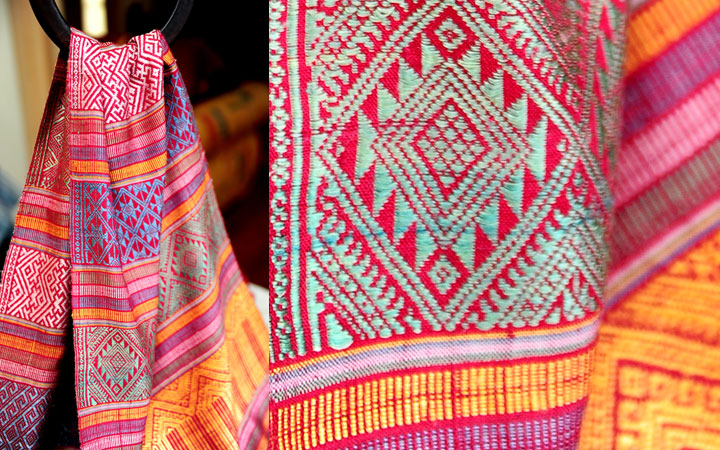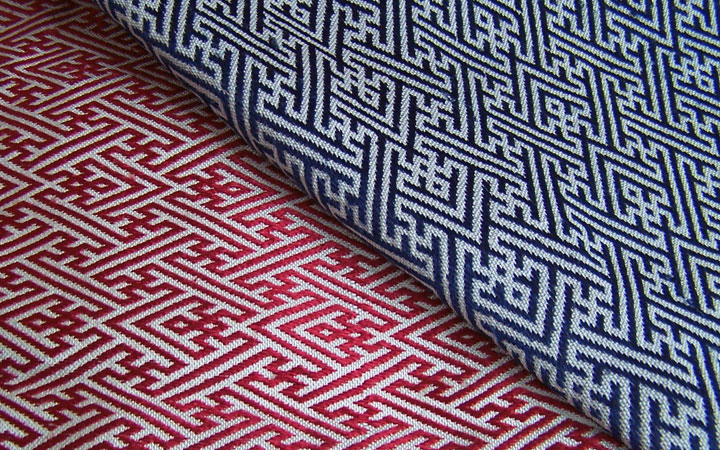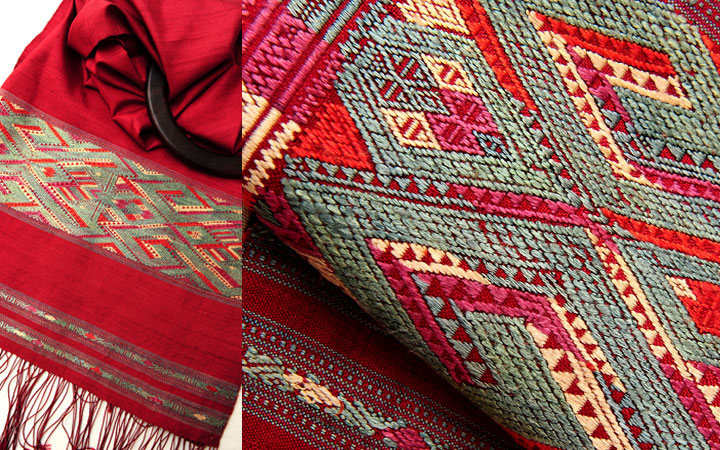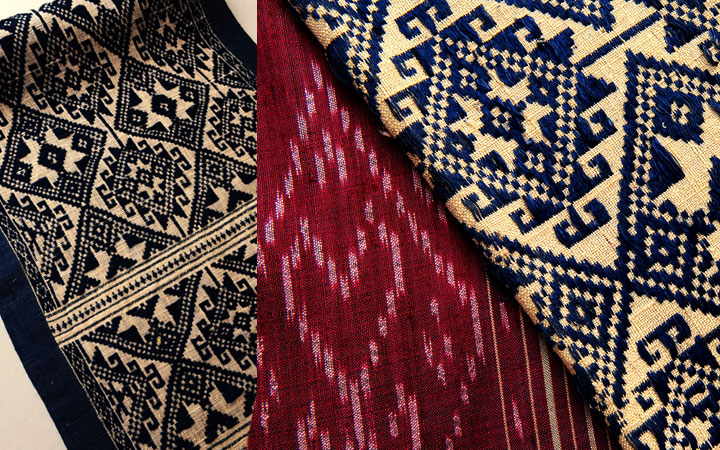Weaving History
A History of the Weaving and Lao Women
The history of Lao women’s reeling and weaving of silk goes back for thousands of years, as mothers have been passing down this skill to their daughters for generations. Women have been synonymous with weaving for centuries, and weaving is an important part of a woman’s daily life.
Sixty years ago, women from villages in the northern provinces Hua Phan (also called Xam Neua) and Xieng Khouang received no formal education. It was the custom of village families not to send their daughters to school. Instead, daughters were required to learn how to reel and weave silk thread, embroider, spin cotton thread, plant mulberry trees and raise silkworms, and produce natural dyes. Their mothers, grandmothers, and older sisters taught them these skills.
From age four or five, girls are encouraged to “play house” by playing with weaving and embroidery equipment. At six to 11 years, mothers begin teaching their daughters to weave plain cloth, and then how to weave simple patterns when they are 12-17 years old. At age 18 and up daughters are ready to learn the most difficult patterns. They also learn how to make patterns that consist of many colours, as well as how to design their own patterns.
The ancient weavers designed their patterns to resemble the things they saw in their daily lives. Other weavers’ designs were limited only by their creativity and imaginations. In the beginning, weaving patterns were composed of flowers, plants, trees, vines, animals, animal skin patterns, natural views, and tools for daily life; but the deeply-rooted cloth patterns of Laos make it easy for modern weavers to adapt the old designs for use in their present styles. Each pattern has a different meaning, although the pattern’s colours vary, according to the weaver’s ideas and personal taste.







